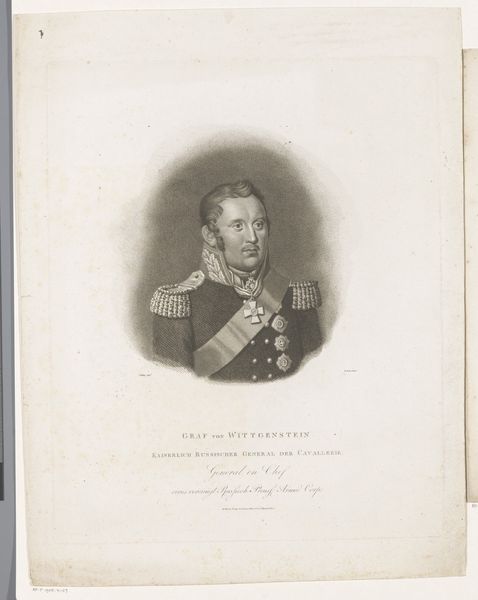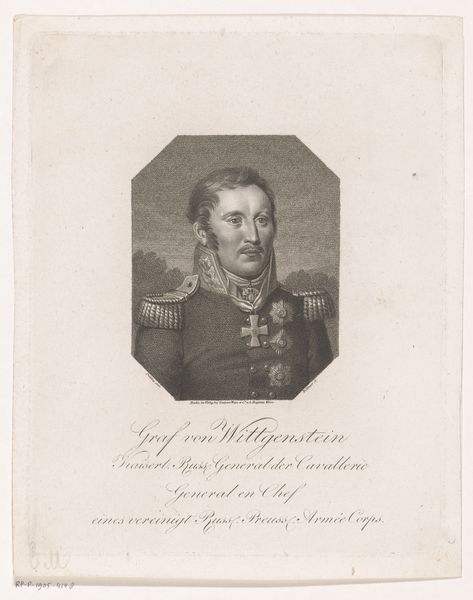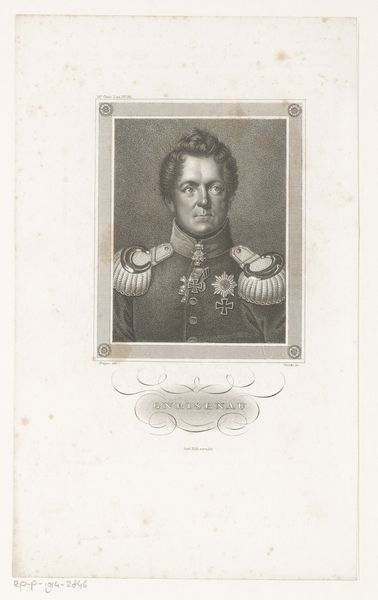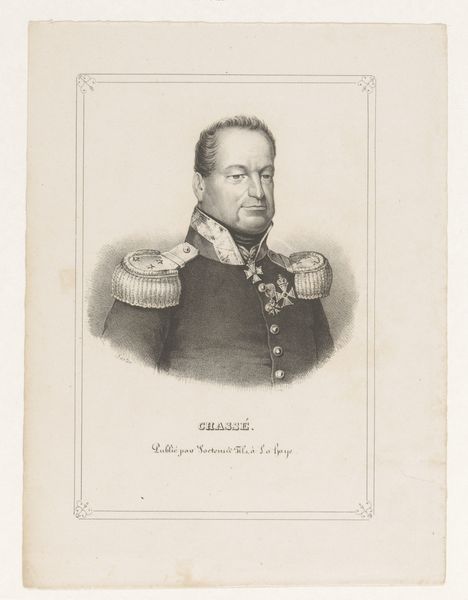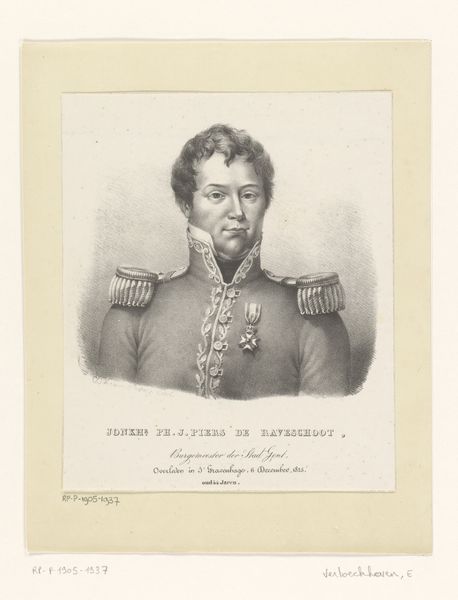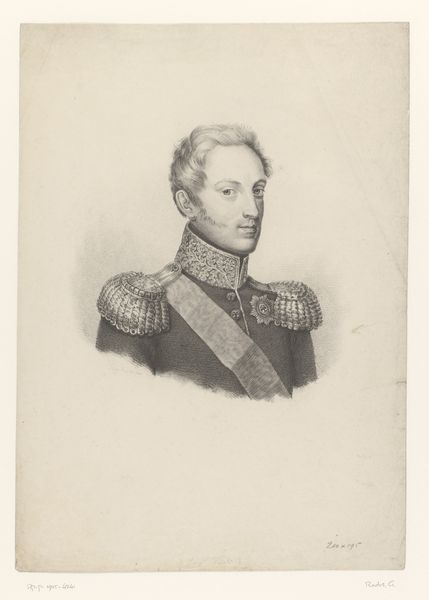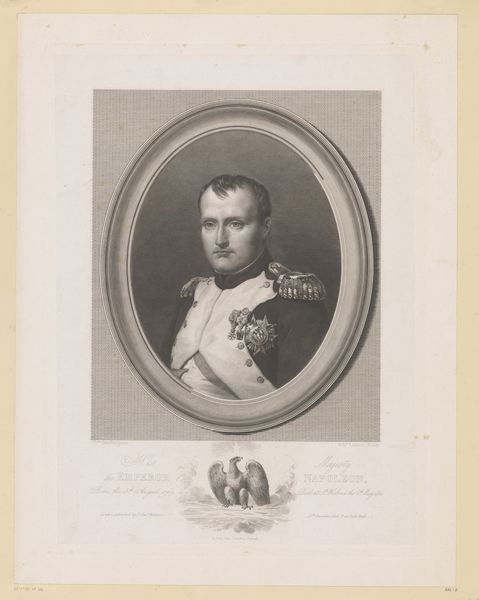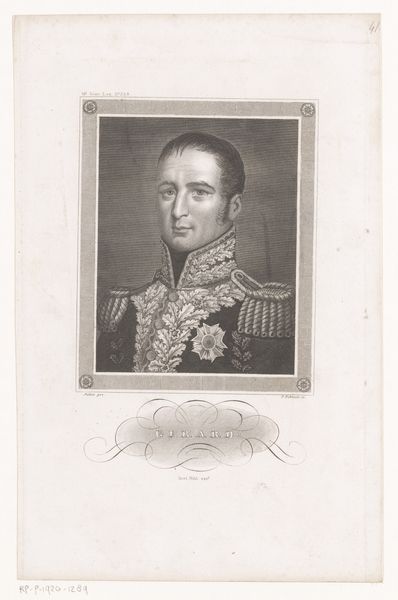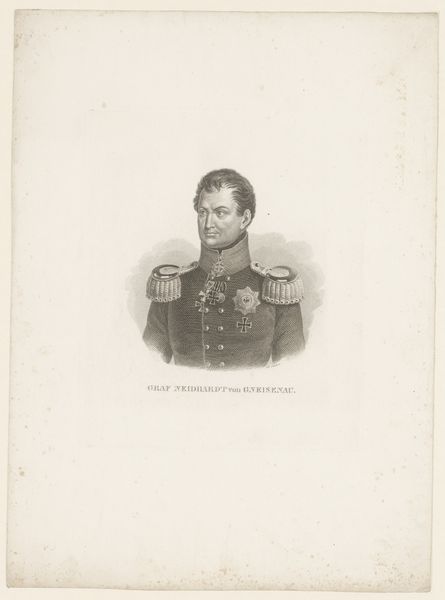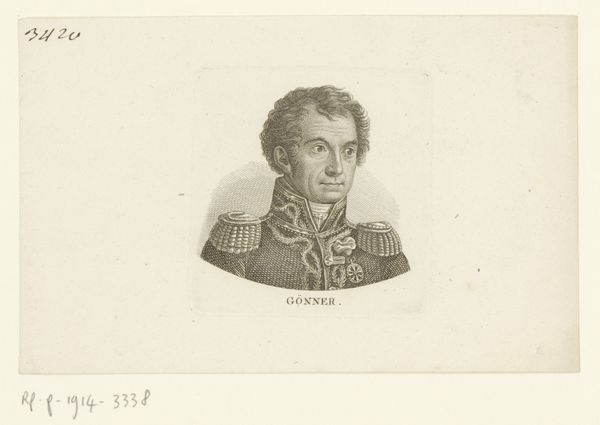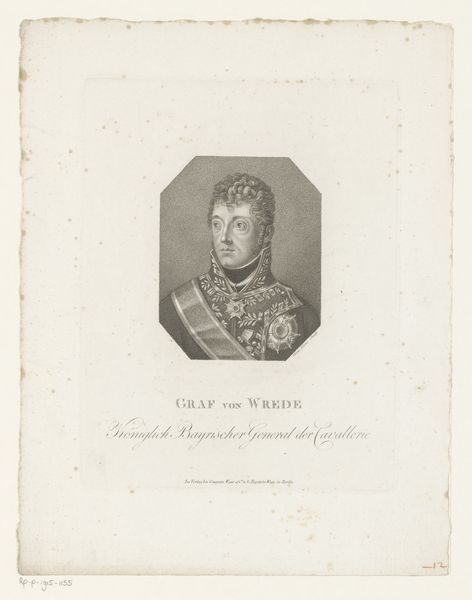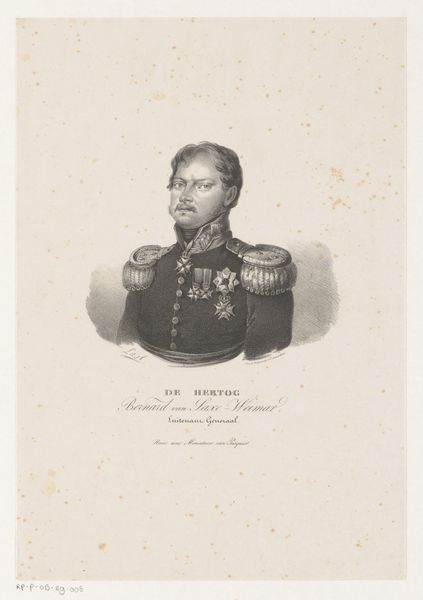
engraving
#
portrait
#
pencil drawn
#
neoclacissism
#
pencil sketch
#
old engraving style
#
sketchbook drawing
#
pencil work
#
history-painting
#
engraving
Dimensions: height 110 mm, width 71 mm
Copyright: Rijks Museum: Open Domain
Curator: Here we have Johann Christiaan Böhme’s “Portret van Ludwig Adolph Peter, Fürst von Sayn-Wittgenstein,” an engraving dating back to 1815. Editor: Immediately, I’m struck by the meticulous detail. The texture achieved with what looks like fine lines of varying density is quite captivating, almost hypnotic. It feels serious, formal, the man has gravitas. Curator: The artwork's success owes much to Böhme's ability to utilize the engraving medium to replicate subtle tonal gradations, creating a depth that brings the portrait to life. The visual rhythm inherent in the cross-hatching reinforces a sense of structure and order, hallmarks of neoclassical aesthetics. Editor: It makes me wonder, what was the artist trying to say with this almost clinical rendering? Is it about elevating the subject, Graf von Wittgenstein, through the rigor of the technique itself? Does the coolness speak to the subject's own stoicism or status? Curator: Perhaps it reflects the social function of portraiture during the Neoclassical period: an emphasis on order, reason, and the representation of idealized, virtuous subjects. The sharp delineation of form serves not only aesthetic values but also reflects societal hierarchies and power dynamics. Editor: Absolutely, there's an undeniably staged feel to the whole composition, a sense of authority perhaps verging on austerity. And yet, peering closely, there's a humanity shining through those eyes, don't you think? As if caught between the artist’s process and some hidden vulnerability. Curator: That tension you describe might stem from Böhme’s delicate balance of capturing likeness while adhering to established conventions. The face remains somewhat naturalistic amidst the highly stylized embellishments of his uniform. Editor: It makes you consider what lies beneath that carefully constructed surface, what price someone pays for visibility, especially as a figurehead of authority. In all, it presents such a considered image of how one would want to be perceived. Curator: The work offers a lens through which to see not only the individual, but the prevailing aesthetic and societal ideals of that moment in history. Editor: Indeed. For me, its allure resides in its ability to present the familiar—a historical portrait—through a technical approach that continually invites closer observation.
Comments
No comments
Be the first to comment and join the conversation on the ultimate creative platform.
